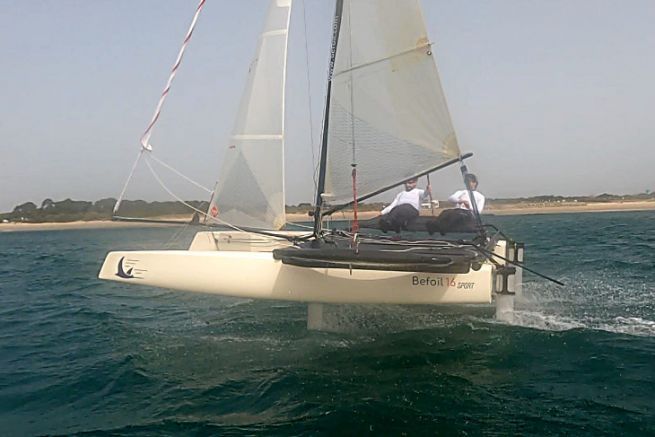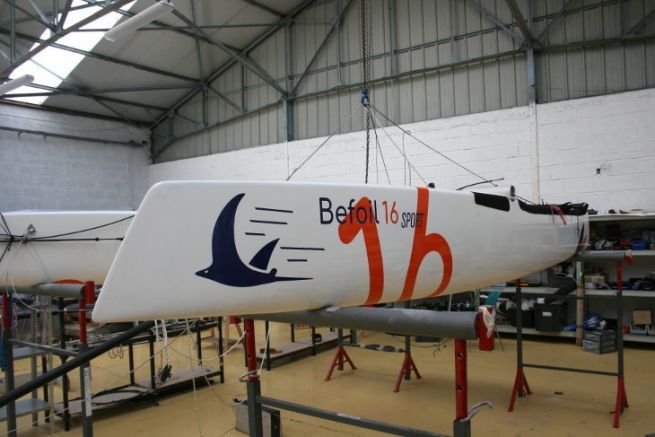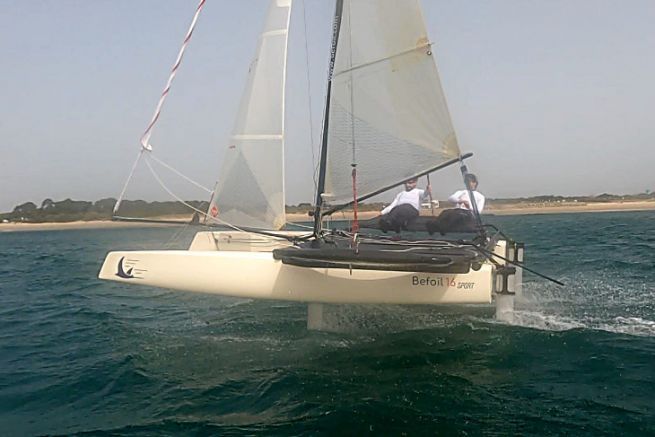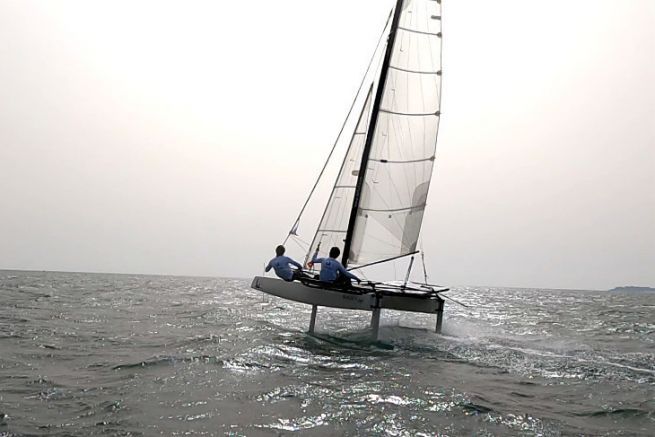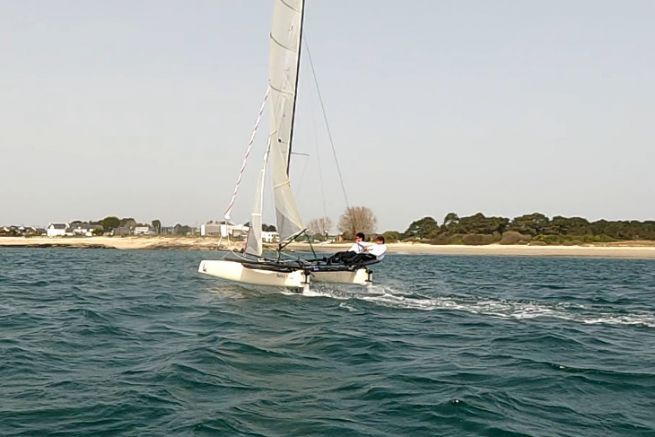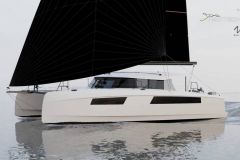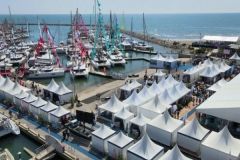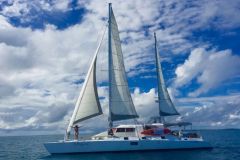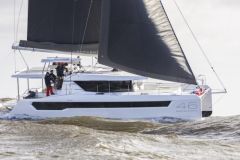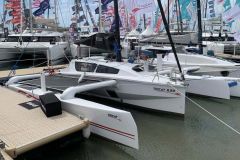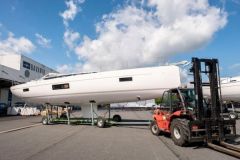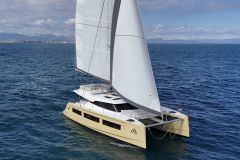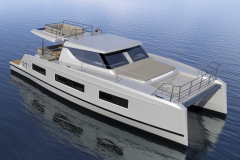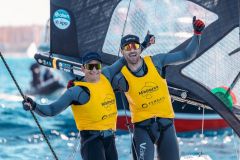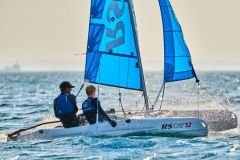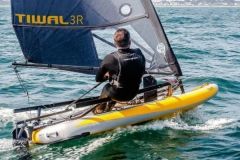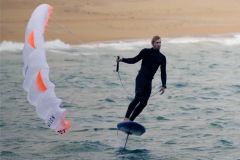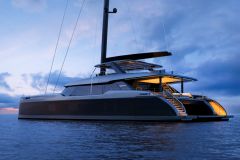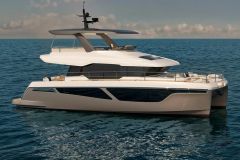The heart of the Befoil 16 Sport In this section, we look at the assembly of the catamaran's appendages, foils and rudders, and their adjustment.
Foils permanently installed for the season
Our test sail marked the beginning of the season, and the Befoil 16 Sport was waiting for us on the quay of the Kerguelen sailing club in Lorient without its foils. This was the opportunity to test the assembly of the appendages on the catamaran. While one person was placed under each hull to lift it by the front until the boat was tilted at 45°, a third person was in charge of threading the foil in its well. The weight of the boat makes it difficult for two people to handle, which is unfortunate for a catamaran designed for double-handed sailing, but the choice of aluminum makes it easy to leave the foils on the platform all season. Finding a charitable soul twice a year seems feasible.
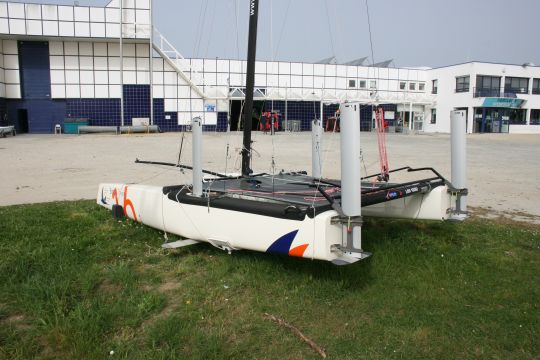
Limited settings to keep it simple
With the appendages in place, it's time to focus on the trimming. "We chose to limit the number of adjustments so that the boat remains accessible. The idea was to keep only the most useful ones and to remove all those that could prevent the boat from flying or be dangerous if they are wrong" summarizes Charles de Lisle, Befoil's technical manager.
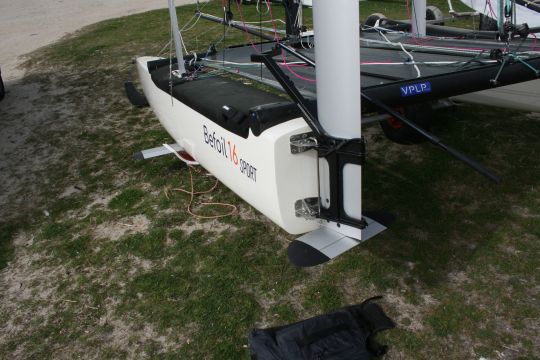
When sailing, only two main adjustments are possible: the incidence of the foils, by adjusting the upper hold of the appendage, and the height of the floats on each hull. The former sets the lift of the foils at a given speed, while the differential between the height of the floats defines a sort of target heel. When the windward sensor no longer touches the water, the foil flap reverses, creating a downward force and adding to the boat's stability. In addition to these two settings, the rudder incidence can be set before the start, and is fixed for the duration of the sailing.
At the time of purchase, owners are provided with a "tuning guide". The booklet explains the influence of the major adjustments, appendages, but also the rigging. Answers are also proposed to solve the "problems" encountered while sailing. "In reality, there are two types of people, those who want to understand and those for whom it is simply magic to fly a boat" smiles Charles de Lisle.
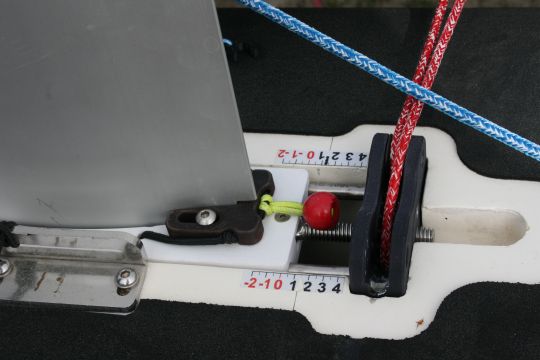
Focus on safety
The choice of the foils' surface distribution was also determined by the accessibility of the flight. Part of the lift was kept on the horizontal planes of the rudders. "In the event of a stall, the boat rises and does not risk diving, unlike other boats. This simplifies navigation and is safer for a beginner" explains the technical manager. We'll have the opportunity to see it in action!
